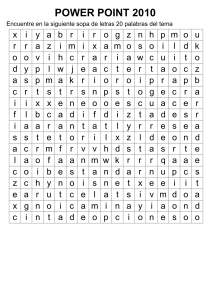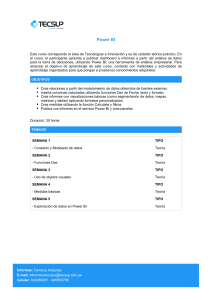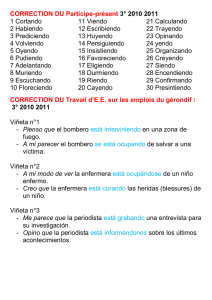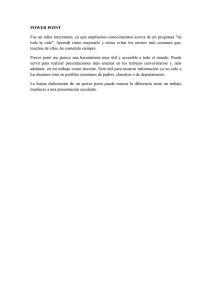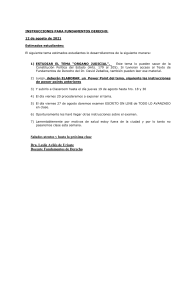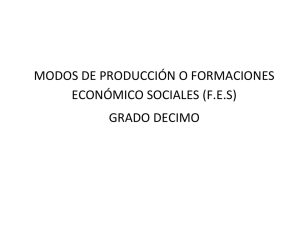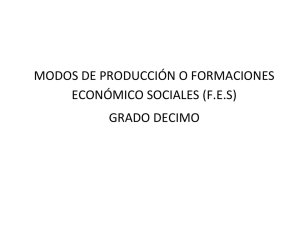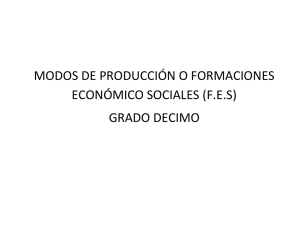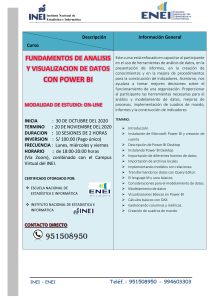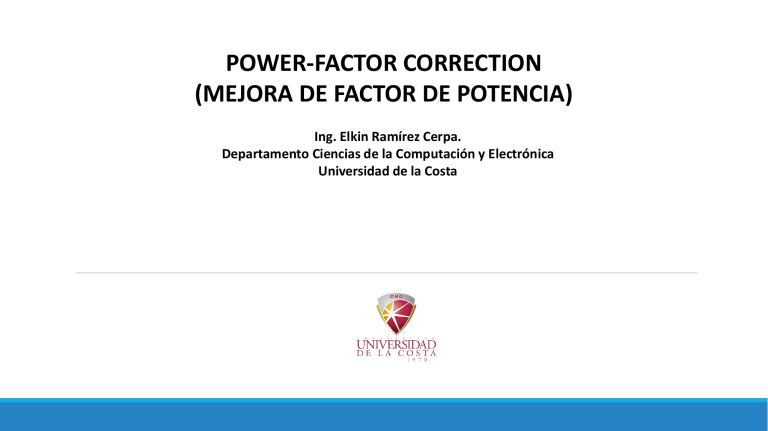
POWER-FACTOR CORRECTION (MEJORA DE FACTOR DE POTENCIA) Ing. Elkin Ramírez Cerpa. Departamento Ciencias de la Computación y Electrónica Universidad de la Costa POWER-FACTOR CORRECTION DEFINITION • Heavier currents also require larger conductors, increasing the amount of copper needed for the system, and, quite obviously, they require increased generating capacities by the utility company. P = 𝐼2𝑅 • In turn, the smaller the net apparent power, the smaller the current drawn from the supply. Minimum current is therefore drawn from a supply when: S = P y 𝑄𝑇 = 0 Figura 1. Demonstrating the impact of power-factor correction on the power triangle of a network. • Fp approaches 1. • The process of introducing reactive elements to bring the power factor closer to unity is called powerfactor correction. • Since most loads are inductive, the process normally involves introducing elements with capacitive terminal characteristics improving Fp. POWER-FACTOR CORRECTION DEFINITION Figure 2. The impact of a capacitive element on the power factor of a network. Since the phase angle associated with both the applied voltage and the source current is the same, the system appears “resistive” at the input terminals, and all of the power supplied is absorbed, creating maximum efficiency for a generating utility. POWER-FACTOR CORRECTION EXAMPLE #1 A 5 hp motor with a 0.6 lagging power factor and an efficiency of 92% is connected to a 208 V, 60 Hz supply. a) Establish the power triangle for the load. b) Determine the power-factor capacitor that must be placed in parallel with the load to raise the power factor to unity. c) Determine the change in supply current from the uncompensated to the compensated system. d) Find the network equivalent of the above, and verify the conclusions. POWER-FACTOR CORRECTION EXAMPLE #1 POWER-FACTOR CORRECTION EXAMPLE #1 d. For the motor, the angle by which the applied voltage leads the current is: POWER-FACTOR CORRECTION EXAMPLE #1 POWER-FACTOR CORRECTION EXAMPLE #2 The power triangle for the total system The desired power factor of 0.95 results in an angle between S and P of: POWER-FACTOR CORRECTION EXAMPLE #2 changing the power triangle to that in: POWER-FACTOR CORRECTION APPLICATIONS Figure 3. Portable Power Generators. Ver vídeos: https://youtu.be/G9mi-haUblw https://youtu.be/KA_6vBqNONU POWER-FACTOR CORRECTION BUSINESS SENSE • Factor de potencia asociado con la planta como un todo puede tener un efecto cuantificable sobre la corriente consumida y, por tanto, en el consumo de kVA sobre la línea de energía. • Las compañías productoras de energía están conscientes de este problema y en realidad añaden un sobreprecio si el factor de potencia cae por debajo de 0.9 aproximadamente. • Empresas piden a cada usuario intentar asegurar que su factor de potencia este entre 0.9 y 1, de manera que la demanda en kW sea muy cercana a la demanda en kVA. POWER-FACTOR CORRECTION EJERCICIOS PROPUESTOS
